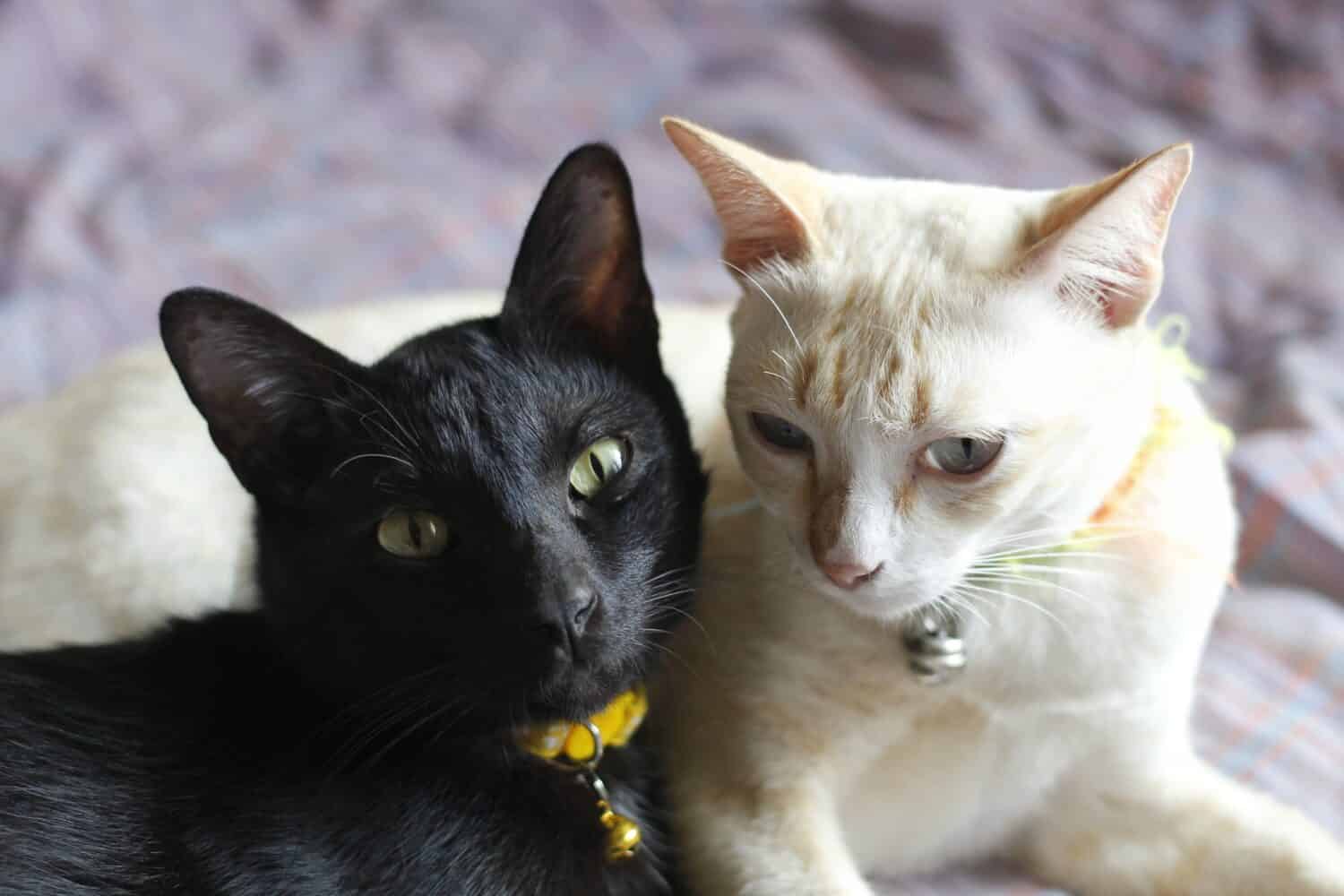Cats are common beloved household pets. Known for their independence and sometimes sassy nature, cats can provide a sense of wholesome comedy and — albeit sometimes conditional — love. However, is it true cats lack affection, or is that simply a myth?
There are many misconceptions about cats that have gained traction over the years. Here are 15 common myths about cats — debunked.
1. Black Cats Are Bad Luck
Many people believe black cats are bad luck. This idea stems from folklore across various cultures that painted black cats as bad omens. Additionally, some legends even claim that black cats are a witch’s sidekick or are even witches reincarnated. If you stumble across a black cat along your path, you’re believed to experience a stroke of bad luck as a result.
However, this couldn’t be further from the truth. In fact, some cultures actually view black cats as deities and good omens, bringing luck and protection to their owners or loved ones. For example, in Japan, black cats symbolize fortune, prosperity, and love.
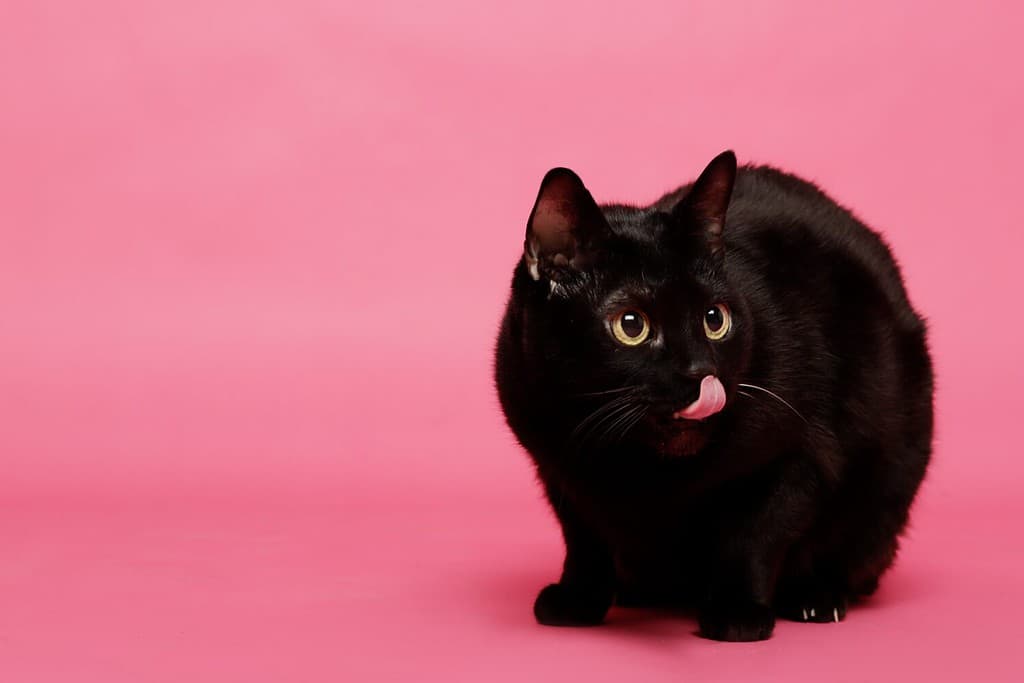
Black cats are some of the most under-adopted cats, likely due to the many superstitions surrounding them.
©DondykRiga/Shutterstock.com
2. All Cats Hate Water
A common assumption about cats is that they all hate water. Experts believe this is because it takes a while for a cat’s fur to dry, leaving them damp, cold, and weighed down for quite some time. Additionally, some owners will even use spray bottles to punish their cats for misbehaving. (Note: this is not recommended by vets, as it can actually create a negative association with humans and doesn’t actually teach them right from wrong. In fact, this might even create a dislike for water!)
While this might be true for a lot of domestic kitties, it isn’t the case for every type of cat. In fact, even some household pet cats actually don’t mind getting wet. If you’ve ever left your faucet on for your furry friend, you might have noticed them pawing at the water and expressing their curiosity toward it.
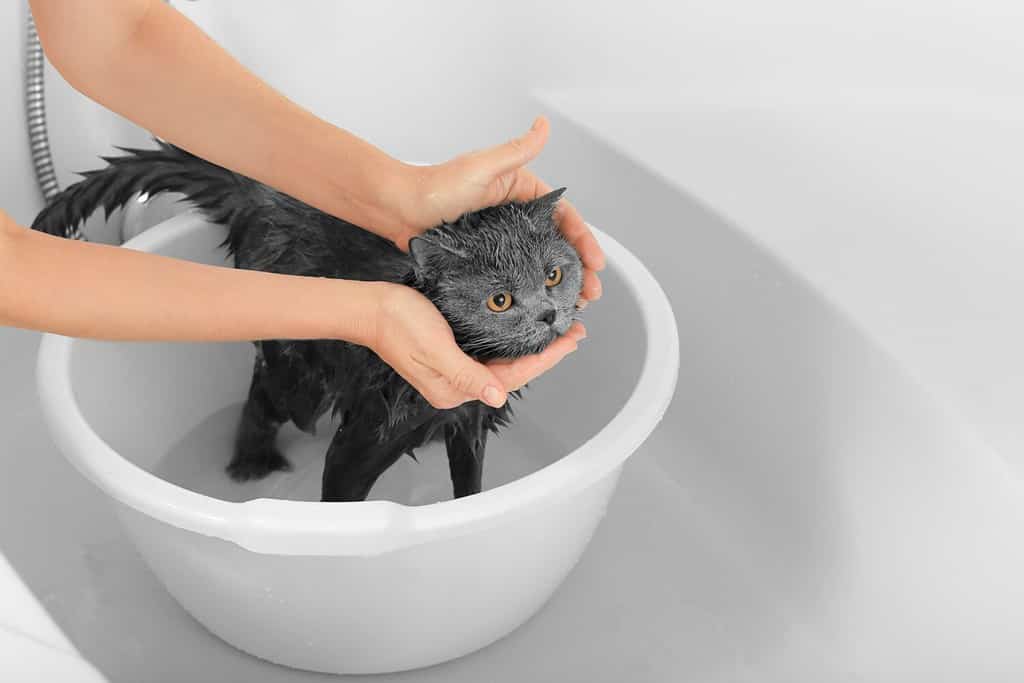
Not all cats have an aversion to water.
©Zulkarnieiev Denis/Shutterstock.com
3. Cats Aren’t Affectionate
One of the most common myths about cats is that they aren’t affectionate and hate humans. The media, many television shows and movies, and society in general often portray cats as unloving, cold creatures who dislike being around humans. It’s a frequent assumption that cats want nothing to do with their owners and would rather be left alone.
This claim is not true. While some cats are less affectionate than others — and might not express their love like other pets, such as dogs — cats can be extremely affectionate when they feel loved and safe. In fact, many cats are actually quite cuddly and clingy. Additionally, you’ve likely seen or experienced a cat brushing up against your or someone else’s legs as a way of bonding.
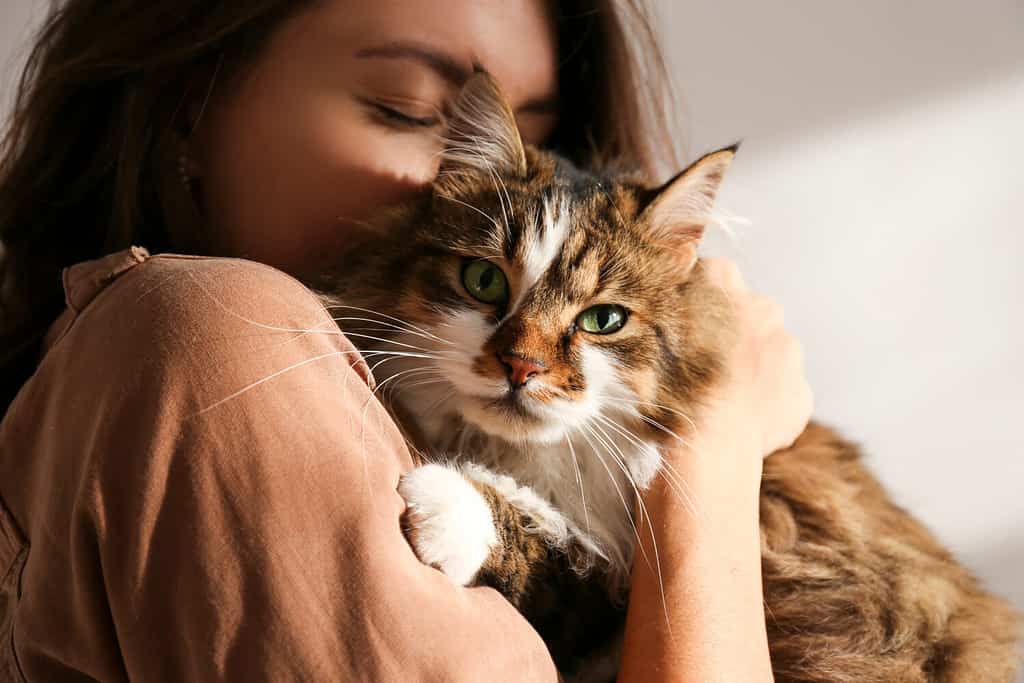
Despite what many believe, some cats actually love being cuddled by their owners.
©evrymmnt/Shutterstock.com
4. Cats Always Land on Their Feet
While they oftentimes do land on their feet, this isn’t always the case for cats. The adorable animal has a “righting reflex” that helps them orient themselves and land on their paws rather than on their side or back. Additionally, they have flexible backbones and a vestibular apparatus in their ears that aid in balance. The ability to land on their feet is typically fully developed by seven weeks (but can be as early as three weeks). However, this doesn’t guarantee a cat will always land on its feet.
Many cats have been injured or fatally harmed from severe falls where they didn’t land on their feet. In fact, this is a common occurrence that many vets see. While many people believe it’s more difficult for a cat to land on its feet from great heights, cats actually have more difficulty with shorter falls, as there is less time for their instinct to kick in.
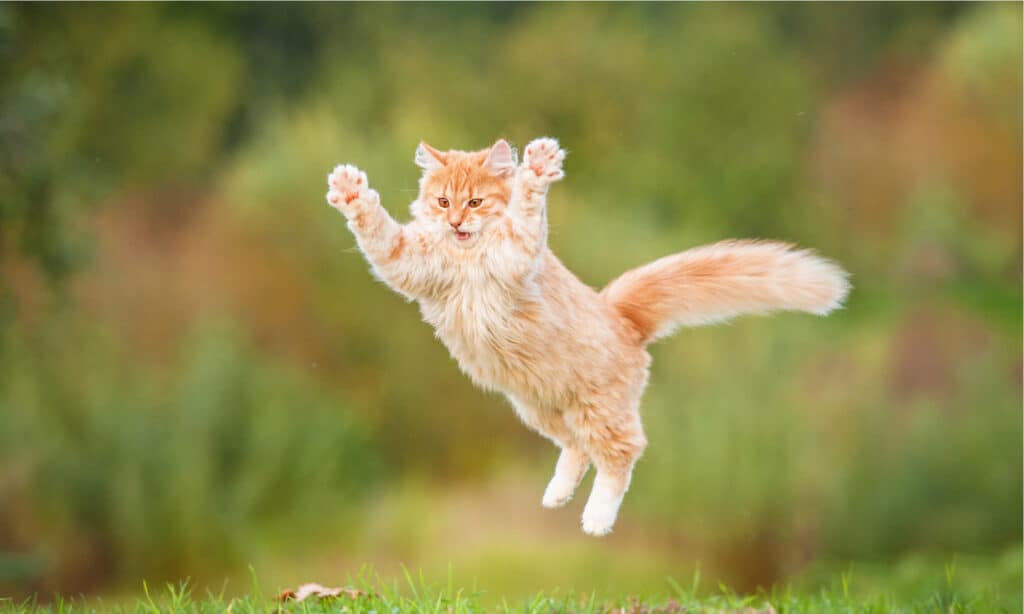
There’s no guarantee a cat will land on its feet every time.
©Rita_Kochmarjova/Shutterstock.com
5. A Purring Cat Is a Happy Cat
Purring is a common sound cats create. When a cat purrs, we usually believe it feels content and safe. This is often the case, especially if your furry friend is cuddled up with you and otherwise appears comfortable. However, cats purr for a variety of other reasons, too.
For example, a cat might purr as a way to comfort itself when it’s feeling scared, threatened, ill, or even in pain. It also might use purring as a form of communication, especially when the cat is hungry. Additionally, mother cats will purr to comfort and bond with their babies. That being said, if your cat has been purring more than usual while displaying new or unusual behaviors, don’t just assume your cat is content. Consider taking it to the vet to ensure it isn’t in pain or experiencing emotional distress.
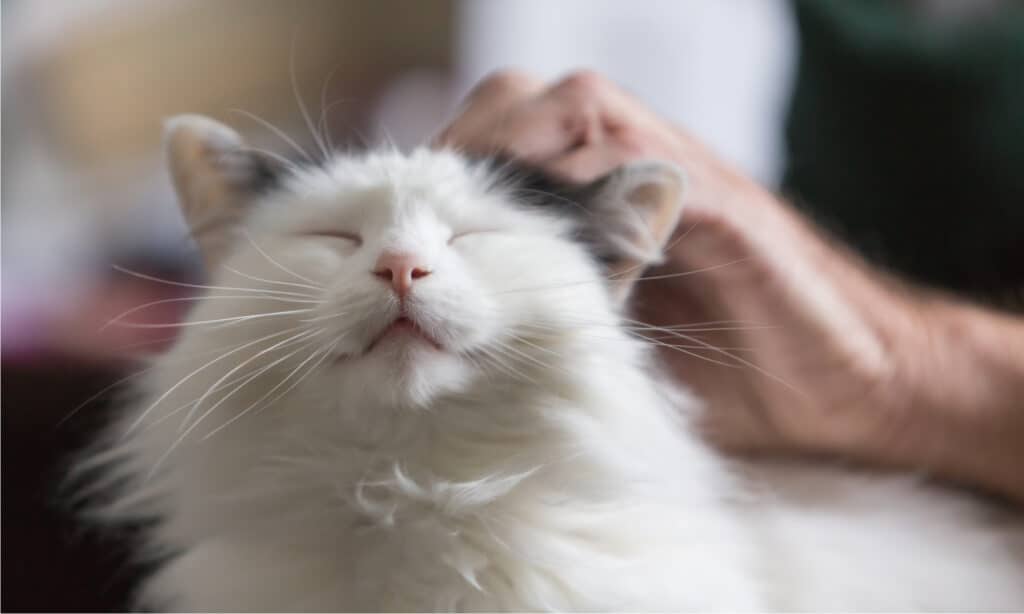
Cats purr for various reasons, some positive and some negative.
©Christine Glade/Shutterstock.com
6. Cats Have Nine Lives
An old English proverb states: “A cat has nine lives. For three, he plays; for three, he strays; for the last three, he stays.”
This is likely the most obvious myth. However, it’s important to address the ideas behind it. Cats, of course, don’t actually have nine lives; they just have one, like everyone else. However, while its exact origin is unknown, the idea of this being true likely stems from different legends (like those listed earlier) that cats are reincarnated witches or even deities.
Another reason people use this expression is because cats are resilient creatures. With their ability to survive high falls and their stealthy yet curious nature, it makes sense that they’ve earned this reputation.
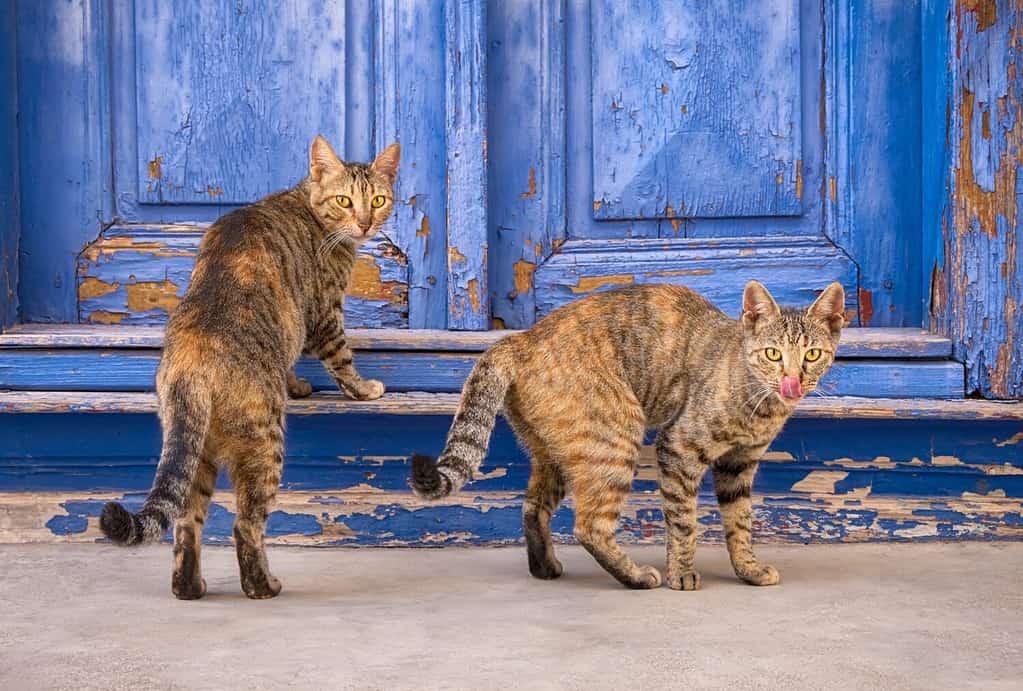
Cats are mysterious and curious creatures.
©Katho Menden/Shutterstock.com
7. Cats Are Nocturnal
If you have a cat, you might assume it’s nocturnal, as it’s not uncommon for cats to get the “zoomies” (or bursts of energy) in the middle of the night. You might also notice your cat sleeps throughout the day, giving you the impression that it’s nocturnal. However, most cats sleep between 12 to 18 hours per day, so they naturally spend much of daylight napping.
Cats are actually crepuscular, making them most active at dawn and dusk. While they might keep you awake with their antics throughout the night, this doesn’t mean they’re nocturnal. Think of it this way: just because you, as a human, might stay awake until 3 a.m., this doesn’t make you naturally nocturnal.
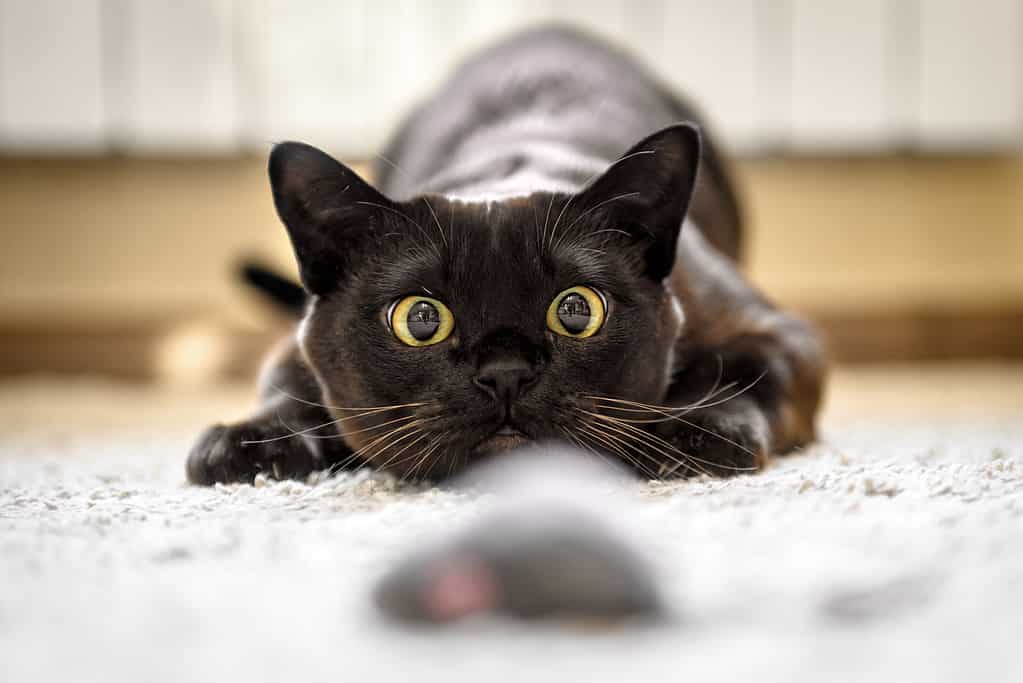
Though cats might get a burst of energy at night, this doesn’t mean they’re nocturnal.
©scaliger/iStock via Getty Images
8. Cats Don’t Like Attention
Similar to the idea that cats don’t like affection, many also believe cats don’t crave any sort of attention either. Though cats can be independent creatures (especially when compared to dogs or other pets), many still crave attention from their owners or other humans. In fact, many cats will even meow, cry, or even playfully attack you to get your attention. This also depends on their personalities, as different cats might desire more attention than others.
However, their attention-craving is typically on their own terms. For example, if you shower your cat with affection while it’s basking in its solitude, you likely won’t get the best reaction. But this doesn’t mean your furry loved one won’t want some love at a later time. Generally, if you give your cat space and respect its boundaries — as you should do with humans and any living being, really — they will likely come around.
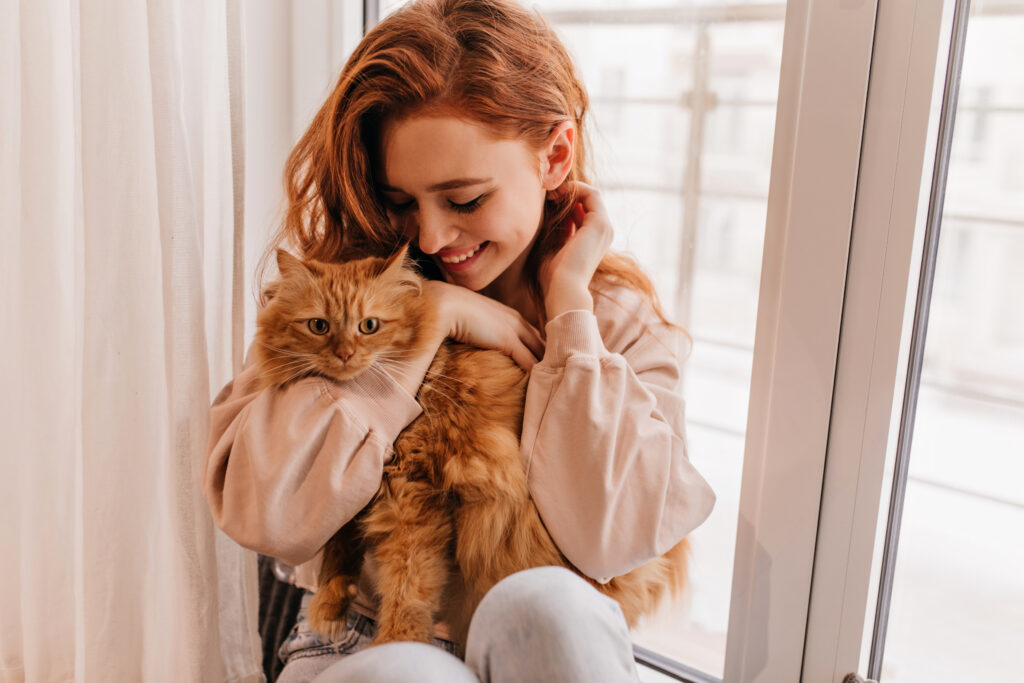
Cats actually tend to crave attention from their owners, even if it’s just to play.
©Look Studio/Shutterstock.com
9. Cats Are Low-Maintenance Pets
While cats might not need as much attention and exercise as dogs, this doesn’t mean they’re low maintenance. Many pet owners will adopt a cat under the impression that they won’t need to care for it much. Aside from cleaning the litter box and providing food and water, many believe there isn’t much else you need to do for a cat. However, this is not true.
Cats need attention, love, and affection just like other pets. And while you might not have to take them outside to go to the bathroom or walk them multiple times a day, this doesn’t mean they don’t require maintenance. In fact, even just being away from their owners for a day or two can cause separation anxiety and a sense of instability, which can emotionally scar a cat.
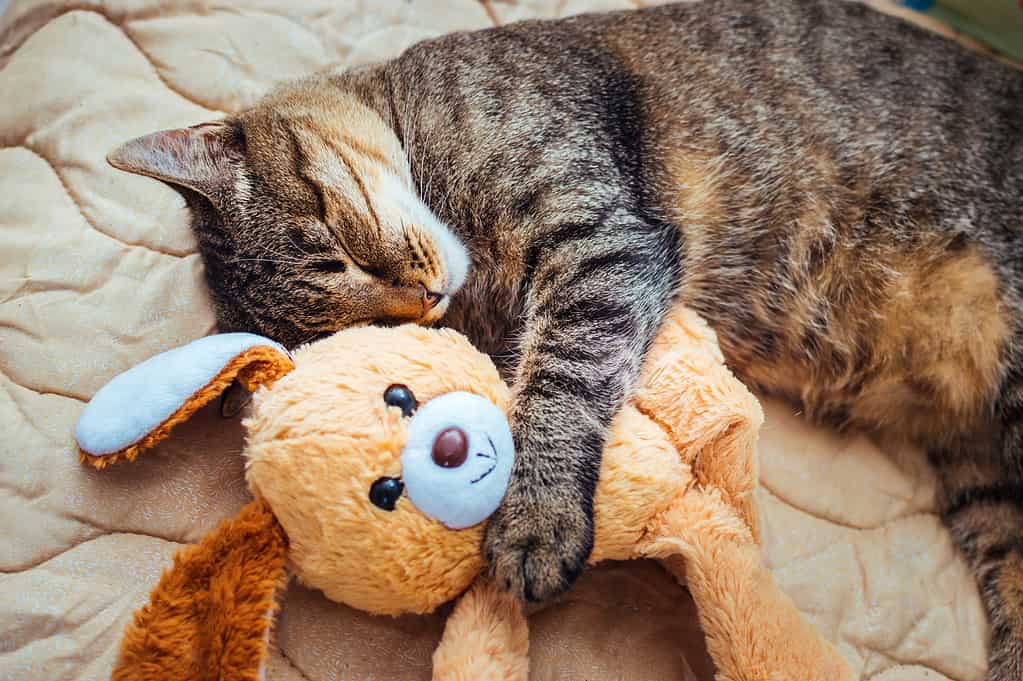
Despite their stigma, cats are sweet, loveable creatures that can feel stressed when their owners are away.
©anastas_/1391797125 via Getty Images
10. Cats Should Drink Cow’s Milk
Many people believe cats should drink cow’s milk for its nutrients. In fact, owners often give their furry loved ones a bowl of milk every day, assuming it contributes to a well-balanced diet. However, this can actually upset a cat’s stomach, as felines often struggle with lactose intolerance — especially if they aren’t used to consuming milk. Typically, your cat will get its proper nutrients and hydration from water and wet food.
If you do want to give your cat milk, consider choosing a lactose-free variation. Many people will feed their felines oat milk, almond milk, or another alternative milk choice, but these don’t typically contain the same nutrients and often have added sugars, fats, and other ingredients that aren’t good for your kitty.

While cats might beg for cow milk, it’s best not to risk upsetting their stomach.
©Sergio Photone/Shutterstock.com
11. Cats Hate Dogs
It’s a common misconception that cats hate dogs. In fact, some people will even avoid adopting both pets as they’re afraid of hostility between them. Realistically, it’s more accurate to say that a cat hates being chased or aggressively played with by a dog. Dogs can sometimes come on a little too strong to many felines, causing them to go into defensive mode and run, hiss, arch their back, and even bite and attack.
However, cats can actually bond deeply with dogs. Many will even cuddle close to their fellow household pet and engage in playful activities. This might take time for a cat to warm up to an active, sometimes overbearing pup, but you’ll likely notice the cat will at least tolerate a dog’s presence.

Cats and dogs can actually form lasting bonds, especially if they grow up in the same household or environment.
©Sarah Verheul/Shutterstock.com
12. Cats Hate Other Cats
Because of their frequent aggression toward one another, cats often give off the impression that they hate each other. Many cats — especially unrelated male cats — will antagonize each other as a form of competition. Additionally, if a cat has been living alone in a home and then suddenly is introduced to a new feline pet, they might feel territorial and lash out at first. They’re also solitary creatures that don’t necessarily need other cats.
Despite these actions, however, not all cats hate each other. In fact, similar to how they are with dogs, many cats will actually bond with each other and form close friendships. This isn’t always the case, but it’s not uncommon — especially after months spent together.
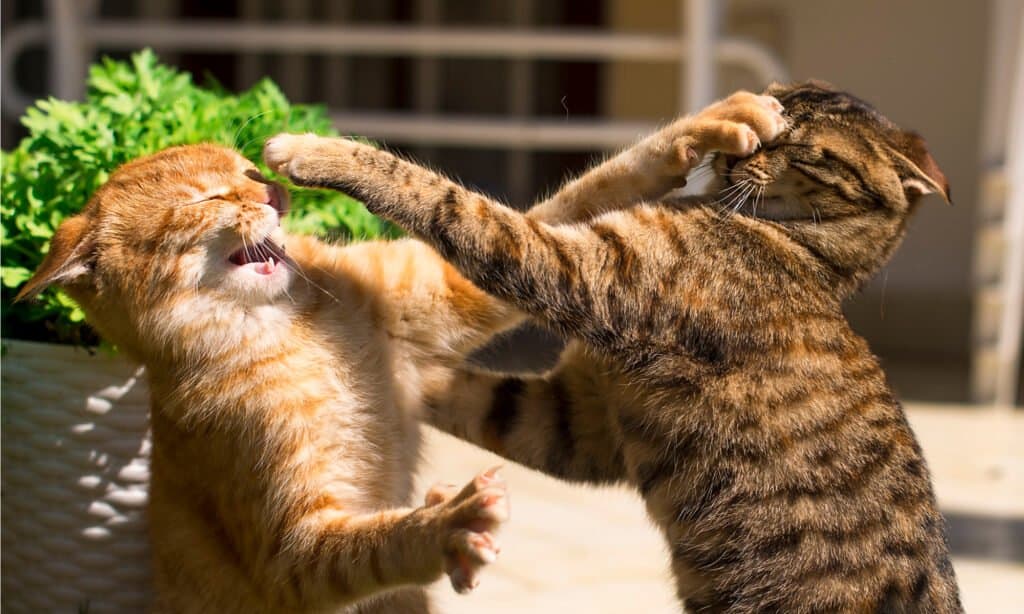
Cats will often engage in play fighting as a way to release aggression.
©Mariya Ilmaz/Shutterstock.com
13. You Can’t Train a Cat
While it might seem as though cats aren’t as easily trainable as dogs, this isn’t necessarily true. In fact, many cats pick up on certain behaviors you teach them — especially as young kittens. Think about how quickly they know to use their litter box or scratch the post you bought them.
However, keep in mind cats don’t typically respond to discipline in the same way dogs do. In fact, it’s more beneficial to simply reward your cat for doing as you say rather than punishing them. Eventually, the cat can follow certain demands and even perform certain tricks for you.

Potty training a kitten is relatively easy, as they have an instinct to urinate in dirt or sand.
©iStock.com/FamVeld
14. You Should Declaw Your Cat
Many people assume it’s safe and even beneficial to declaw a cat. Often, owners simply don’t want to deal with their cats scratching furniture or become a victim of aggressive clawing. However, declawing your cat can cause paw pain, back pain, infection, tissue death, nerve damage, and bone spurs, among other things. It can also make them more susceptible to fatal attacks if they were to venture outdoors and run into a predator. Without their claws, they’re almost defenseless, which can also trigger them to become biters.
Declawing your cat is actually illegal in many states, as it’s considered inhumane. That being said, it’s best to clip your cat’s nails regularly to ensure they’re not too sharp or long (every two to three weeks). You can do this by gently pressing down on the top and bottom of your cat’s paw to expose the claw. From there, using clippers, you can trim the nail. Be sure not to cut too close to the quick (the pink part of the nail), as this will hurt your furry loved one. You might need someone else to keep the cat calm during this process.
If your cat’s temperament does not allow you to clip its claws, take it to the vet or a groomer to safely do the job for you.

Cats often grow long, sharp nails that require frequent clipping and maintenance.
©Iana Kunitsa/iStock via Getty Images
15. Cats Can See in Total Darkness
While cats do have good night vision, this is only the case if there is some low light. Their eyes easily adjust to the darkness, with their pupils expanding wider than ours. This allows more light into their eyes, which naturally helps them see better. As a result, many people assume cats can perfectly see in total darkness. However, this is not the case. There needs to be some sort of low light available for them to see.

Cats can see better than humans in the darkness.
©Konstantin Zaykov/Shutterstock.com
Thank you for reading! Have some feedback for us? Contact the AZ Animals editorial team.

